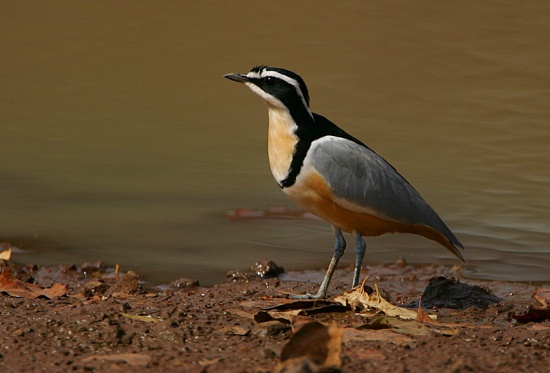(taxonomy) |
(update link) |
||
| Line 21: | Line 21: | ||
<!--Note for Editors: I'm sure this section has been copied, but don't know where from--> | <!--Note for Editors: I'm sure this section has been copied, but don't know where from--> | ||
==Taxonomy== | ==Taxonomy== | ||
| − | This is a [[Dictionary_M- | + | This is a [[Dictionary_M-O#M|monotypic]] species<sup>[[#References|[1]]]</sup>. |
This species is now placed in its own monotypic family [[:Category:Pluvianidae|Pluvianidae]]. It was formerly included in the pratincole and courser family, [[:Category:Glareolidae|Glareolidae]]. | This species is now placed in its own monotypic family [[:Category:Pluvianidae|Pluvianidae]]. It was formerly included in the pratincole and courser family, [[:Category:Glareolidae|Glareolidae]]. | ||
Subspecies ''angolae'' is generally considered invalid<sup>[[#References|[2]]]</sup>. | Subspecies ''angolae'' is generally considered invalid<sup>[[#References|[2]]]</sup>. | ||
| + | |||
==Habitat== | ==Habitat== | ||
Frequents the fringes of a diverse range of aquatic habitats, freshwater margins, lagoons, lakes, swamps and river banks. | Frequents the fringes of a diverse range of aquatic habitats, freshwater margins, lagoons, lakes, swamps and river banks. | ||
Latest revision as of 18:41, 9 July 2014
Alternative name: Crocodile-bird
- Pluvianus aegyptius
Identification
19-21 cm long
- White head
- Black crown, back, eye-mask and breast band
- Bluish-grey upperparts
- Orange underparts
- Bluish-grey long legs
Sexes are similar, but juveniles are duller and the black marking are intermixed with brown
Flight
In flight, the bird looks white, with the exception of the orange belly and a black wing bar.
Distribution
Widespread but very patchy distribution in sub-Saharan Africa but current status in the Western Palearctic is unclear.
Formerly bred on the Nile in southern Egypt but now apparently a very rare vagrant. Also recorded as a vagrant to Libya (August 1969), and old and more doubtful records for Jordan and the Canary Islands. Further south in Africa moves erratically in response to changing water levels and presumably did so in Egypt.
These irregular movements may well lead to further Western Palearctic records but one in Poland in October-November 1991, another in Gironde, France from July 1999 to February 2000 and a third in Belgium in June 2000 were regarded as escapes.
Taxonomy
This is a monotypic species[1].
This species is now placed in its own monotypic family Pluvianidae. It was formerly included in the pratincole and courser family, Glareolidae.
Subspecies angolae is generally considered invalid[2].
Habitat
Frequents the fringes of a diverse range of aquatic habitats, freshwater margins, lagoons, lakes, swamps and river banks.
Behaviour
Very tame birds.
Diet
They pick at small invertebrates, dragonflies and butterflies along the water's edge and nearby open ground (including roads).
Breeding
These birds breed on freshwater sandbanks where the eggs are buried in the sand. They are cooled by water carried in the adults' breast feathers. They lay two to three eggs.
When landing after a flight the pair greet each other by raising their wings to show off their black and white markings.
Vocalisation
Call: a high-pitched krrr-krrr-krrr.
In Culture
The alternative name of "Crocodile Bird" comes from the belief that they pick tit bits out of the teeth of basking crocodiles, but this behaviour has not recently been documented.
References
- Clements, JF. 2011. The Clements Checklist of Birds of the World. 6th ed., with updates to August 2011. Ithaca: Cornell Univ. Press. ISBN 978-0801445019. Spreadsheet available at http://www.birds.cornell.edu/clementschecklist/downloadable-clements-checklist
- Avibase
- Wikipedia
- BF Member observations
Recommended Citation
- BirdForum Opus contributors. (2024) Egyptian Plover. In: BirdForum, the forum for wild birds and birding. Retrieved 26 April 2024 from https://www.birdforum.net/opus/Egyptian_Plover




